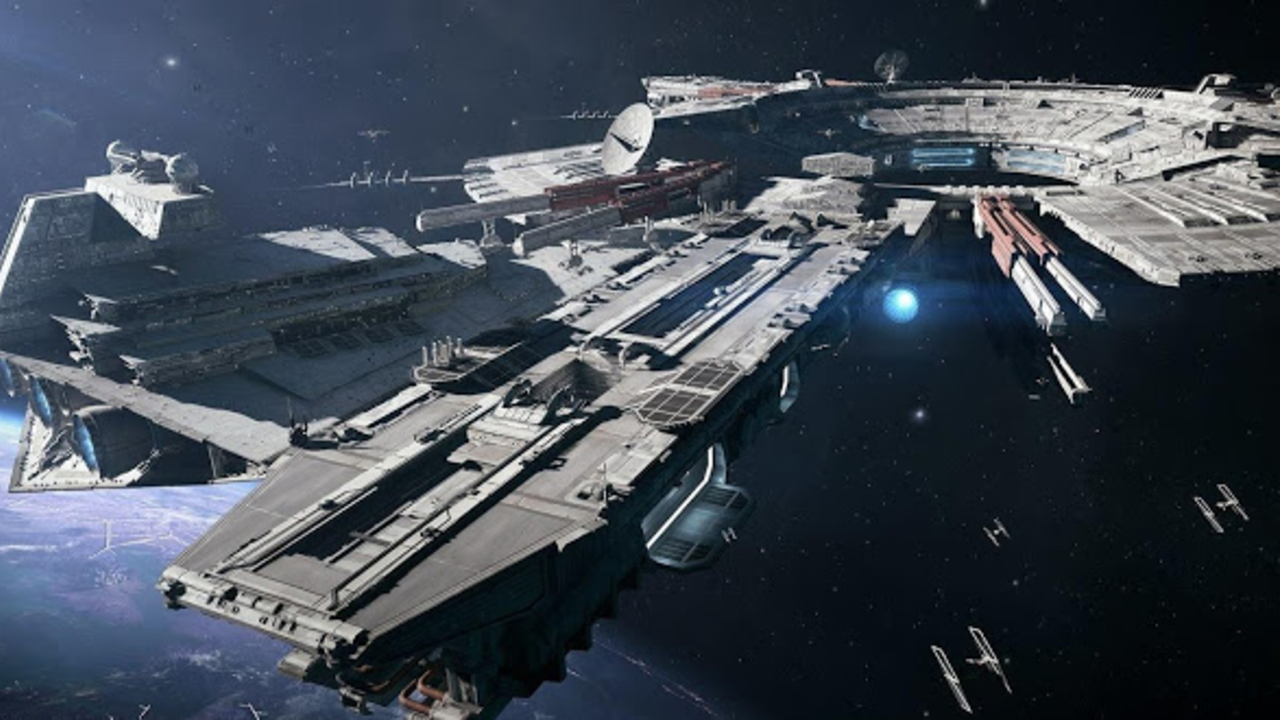The Way They Make The Iconic Ships In 'Star Wars' Will Blow Your Mind
While George Lucas is often referred to as the Maker, and rightfully so, Star Wars would not be anywhere close to the cultural icon it is today without a slew of extremely creative people making their contributions to the galaxy. From John Williams' iconic score to Ralph McQuarrie and his conceptual renderings to Marcia Lucas and her editing skills that made Star Wars the fast-paced space adventure we all love. Colin Cantwell, perhaps a lesser known member of the team, played a key role in designing the spacecraft that ferry our heroes and villains through space. In this article, we'll examine what were his inspirations while designing some of the most iconic ships in cinema.
The original idea for a planet-killing space station was heavily inspired by the work of artist John Berkey, a painter who described himself as "not even a fan of sci-fi." This inspiration can clearly be seen in his piece Untitled (Mechanical Planet, Tin Planet) as a winged spaceship approaches a space station covered in scanners, antennae, and other electronic components. Berkey would go on to do multiple commissioned pieces for Lucas, including the covers of the novelizations of the original trilogy. Upon learning that the function of the Death Star was a planet annihilating super weapon, Cantwell decided to give it a silver and gray hue in order to drive home the artificial mechanical look when contrasted to the green and blue planets it would be terrorizing. He also handcrafted each nook, cranny, gun tower, and sensor array to give the station a more menacing look under stage lighting.
The most iconic feature of the Death Star, the trench containing Galen Erso's booby trap, was a complete accident. During the modeling process, the Death Star was split into two halves to make it easier to work on. This caused the edges of the globe to shrink around the equator, a flaw that would be impossible to hide during shooting. To convince Lucas to use the model anyway, Cantwell pitched the idea that the Empire and Rebels could fight each other across this trench and that the rebel pilots would have to fly down this trench in order to destroy the station. A perfect example of "work smarter, not harder" ended up turning into an iconic film moment.
It is no secret that Star Wars draws heavily from other film genres and uses many of their tropes and themes in the dark vacuum of space. Western, Samurai, and war movies have all made their mark on the galaxy. With the dogfights and space combat heavily inspired by World War II movies from Lucas' youth, it is no surprise that many of the craft in those movies would influence the ships of Star Wars. This is particularly true for the Millennium Falcon. For those unfamiliar with "kit bashing," this term refers to taking several model kits and building an amalgamation of any and all useful parts to create something completely new. The iconic Falcon is a result of kit bashing multiple WWII era model vehicles. While it is no secret that the cockpit of the Falcon was inspired by the "Flying Fortress" bombers of WWII, the fuselage and exterior build of the craft was a combination of models of Panzers, Tiger tanks, and Messerschmitt ME 109 fighters. The design was quite differently proportioned when first presented to Lucas, with the body elongated and the cockpit in the nose of the craft. Lucas famously responded "make it more hamburger shaped," and the Falcon was born.
The original concept work for the Millennium Falcon would not be in vain. While Lucas didn't care for the elongated designs for the modified YT-1300 light freighter, they would work for the Rebel blockade runner known as Tantive IV. This ship was required to be durable and versatile, with a look to match. The first starship that audiences in 1977 set eyes on in the Star Wars universe is perhaps best known for being dwarfed by the colossal Star Destroyer pursuing it. Cantwell described the design for the rebel blockade runner as "an alert lizard," and the ship certainly had to be on high alert to complete its mission. The original model of the Tantive IV was sold in 2015 to a private collector for a measly $450,000.
Source(s): Colin Cantwell AMA, Interesting Engineering, Westword

